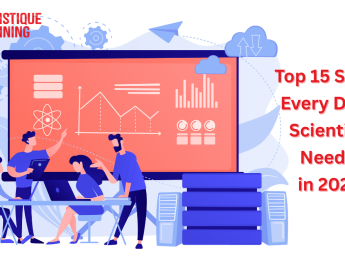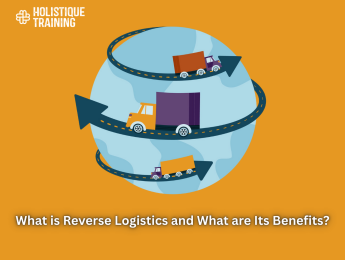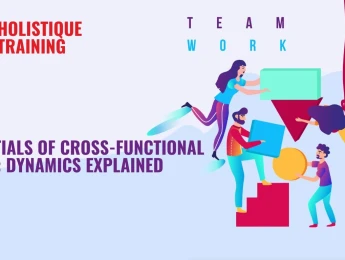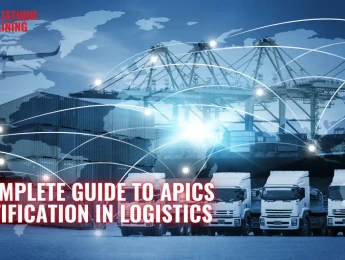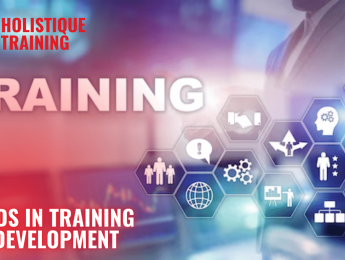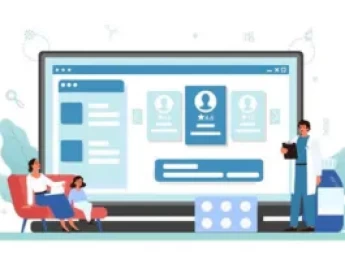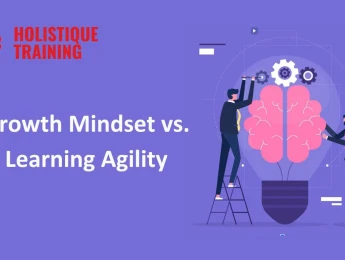- Table of Contents
- Introduction
- What Is Data Cleaning?
- Root Causes of Data Issues
- Human Error
- System Limitations
- Data Complexity
- Data Decay
- External Factors
- Lack of Data Governance
- Benefits of Data Cleansing
- Enhanced Data Accuracy
- Reliable Decision-Making
- Increased Operational Efficiency
- Improved Customer Experience
- Regulatory Compliance
- Cost Savings
- Enhanced Data Integration and Analytics
- Data-Driven Innovation
- Best Practices in Data Cleaning
- 1. Data Profiling and Assessment
- 2. Establish Data Quality Standards
- 3. Data Validation and Verification
- 4. Standardise and Normalise Data
- 5. Handle Missing Values
- 6. Detect and Resolve Duplicates
- 7. Outlier Detection and Treatment
- 8. Documentation and Audit Trails
- Challenges in Data Cleaning at Scale
- Scalability
- Data Integration
- Data Privacy
- Implementing a Data Cleansing Strategy Plan
- 1. Define Objectives
- 2. Allocate Resources
- 3. Prioritise Data Elements
- 4. Establish Data Governance
- 5. Iterative Approach
- 6. Test and Validate
- 7. Monitor and Maintain
- Data Cleaning Tools and Technologies
- Data Cleaning Software
- Machine Learning for Data Cleaning
- Data Quality Dashboards
- The Future of Data Cleaning: AI and Automation
- AI-Powered Data Cleaning
- Automated Data Governance
- Predictive Data Cleaning
- Integration with Data Lakes
- Conclusion
Introduction
In the modern era, data is the lifeblood of organisations, powering critical decision-making processes and shaping business strategies. However, data is often tainted by errors, inconsistencies, and inaccuracies, hindering its true potential. This is where data cleaning, or data cleansing, steps in. By identifying and rectifying data issues, organisations can unlock the power of accurate data, enabling them to make informed decisions and gain valuable insights. In this comprehensive guide, we will delve deep into the world of data cleaning, exploring its significance, the root causes of data issues, its benefits, and the best practices to implement an effective data cleansing strategy.
What Is Data Cleaning?
Data cleaning, or data cleansing, refers to the meticulous process of identifying and rectifying or removing errors, inconsistencies, and inaccuracies from datasets. It encompasses a range of tasks, such as handling missing values, correcting typos, standardising formats, resolving duplicates, and addressing outliers. The ultimate goal of data cleaning is to ensure that data is accurate, complete, and ready for analysis.
Root Causes of Data Issues
Understanding the root causes of data issues is crucial in addressing and preventing data quality problems. Let's take a deeper dive into some common causes:
Human Error
Human error is one of the primary causes of data issues. Mistakes made during data entry, migration, or integration processes can introduce errors, such as typos, incorrect formatting, or inconsistent data. Lack of training, oversight, or adherence to data entry standards can also contribute to human errors.
System Limitations
Data issues can also arise due to system limitations or flaws in data capture systems and software. Bugs in software applications or errors during data transfer between systems can corrupt data, introduce duplicates, or result in missing values. To minimise such issues, robust data capture and transfer mechanisms are essential.
Data Complexity
Data complexity emerges when data is collected from multiple sources, in different formats, and with varying levels of quality. Integration of diverse datasets can introduce inconsistencies, duplicate records, or mismatched data elements. The lack of data standardisation and harmonisation across systems can lead to data quality problems.
Data Decay
Data decay refers to the degradation of data quality over time. As data ages, it may become outdated, incomplete, or irrelevant. Changes in customer information, product details, or market dynamics can render existing data obsolete. Without regular updates and maintenance, data decay can compromise the accuracy and relevance of the data.
External Factors
External factors, such as regulation changes, industry standards, or business processes, can contribute to data issues. When regulations or standards change, existing data may no longer comply, leading to inconsistencies or inaccuracies. Similarly, when organisations undergo structural changes or implement new systems, data integration challenges and data quality issues may arise.
Lack of Data Governance
Insufficient data governance practices can contribute to data quality problems. When roles, responsibilities, and processes related to data management are not clearly defined, it becomes challenging to ensure data accuracy, consistency, and integrity. Organisations may struggle to address data issues effectively without a strong data governance framework.
Identifying and addressing these root causes is crucial for effectively cleaning and preventing data quality issues. Organisations should focus on implementing robust data entry processes, improving system capabilities, standardising data formats, regularly updating and maintaining data, adapting to external changes, and establishing comprehensive data governance frameworks.
Benefits of Data Cleansing
Data cleansing offers numerous benefits to organisations, enabling them to harness the full potential of their data. Let's explore some key advantages in greater detail:
Enhanced Data Accuracy
Data accuracy is the cornerstone of reliable decision-making and actionable insights. When organisations invest in data cleansing, they essentially fortify their data's accuracy. Clean data ensures that every data point is dependable and trustworthy. This reliability is especially critical in industries where even a minor data error, such as healthcare and finance, can have substantial consequences. Clean data becomes the bedrock upon which organisations can confidently build their strategies and make high-stakes decisions.
Reliable Decision-Making
Clean data is not merely a nicety but a fundamental necessity for informed decision-making. It empowers organisations to make critical choices with a higher degree of certainty. Whether it's optimising supply chain operations, targeting marketing efforts, or allocating resources effectively, decision-makers can rely on clean data to guide their actions. The absence of data errors and inconsistencies reduces the risk of costly missteps and enables organisations to steer confidently toward their objectives.
Increased Operational Efficiency
Operational efficiency is closely tied to data quality. When data is riddled with errors and inconsistencies, operations often grind to a halt as teams grapple with resolving data issues. However, clean data streamlines processes, minimising manual intervention and reducing the need for rework. This translates into saved time and resources that can be redirected toward strategic initiatives. Operational teams can focus on analysing data and driving productivity rather than firefighting data-related problems.
Improved Customer Experience
In today's customer-centric landscape, personalised experiences are paramount. Clean data empowers organisations to provide their customers with tailored interactions that resonate on a personal level. Accurate customer data facilitates precise segmentation, enabling organisations to craft highly personalised marketing campaigns and recommendations. This level of personalisation enhances customer engagement, fosters brand loyalty, and elevates the overall customer experience. Customers feel heard and understood, which in turn drives brand affinity and revenue growth.
Regulatory Compliance
The regulatory landscape governing data privacy and security is continually evolving. Organisations must navigate a labyrinth of compliance standards to avoid severe penalties and reputational damage. Data cleansing is a critical tool in ensuring compliance with these regulations. By maintaining accurate and up-to-date data, organisations reduce the risk of non-compliance. They can also demonstrate a commitment to data privacy and security, instilling trust among customers and partners alike. Data cleansing is not merely a best practice but a legal imperative in today's data-driven world.
Cost Savings
When left unaddressed, data errors can snowball into costly problems down the line. Poor data quality can lead to misguided business decisions, operational inefficiencies, and customer churn. Data cleansing acts as a preventive measure against these financial pitfalls. It identifies errors early in the data lifecycle, mitigating downstream impacts and associated costs. Organisations protect their bottom line and maintain a competitive edge by avoiding incorrect strategic directions and resource misallocation.
Enhanced Data Integration and Analytics
Data integration and analytics are at the heart of deriving meaningful insights from data. Clean data forms a solid foundation for these processes. It allows organisations to seamlessly merge data from disparate sources, ensuring compatibility and coherence. Clean data also enables more precise and reliable analyses, leading to deeper insights, trend identification, and actionable intelligence. In the era of big data, where data volumes continue to soar, the role of clean data in ensuring the accuracy and value of analytics cannot be overstated.
Data-Driven Innovation
Innovation thrives on high-quality data. Clean data is fertile ground for identifying patterns, discovering trends, and unearthing hidden opportunities. With accurate and reliable data, organisations can embark on data-driven innovation journeys. They can develop innovative products, services, and business models that address evolving customer needs and give them a competitive edge. Clean data fuels the innovation engine, catalyzing creative problem-solving and strategic breakthroughs.
In summary, the benefits of data cleansing extend far beyond data quality improvement. They touch upon every facet of an organisation, from decision-making and customer relations to operational efficiency and compliance. Clean data is not just an asset; it's a strategic imperative that positions organisations to thrive in a data-driven world. It's the difference between making decisions based on guesswork and making decisions based on a solid foundation of trustworthy information.
Best Practices in Data Cleaning
Implementing best practices in data cleaning is crucial to achieve reliable and accurate data. Here are some key practices to consider:
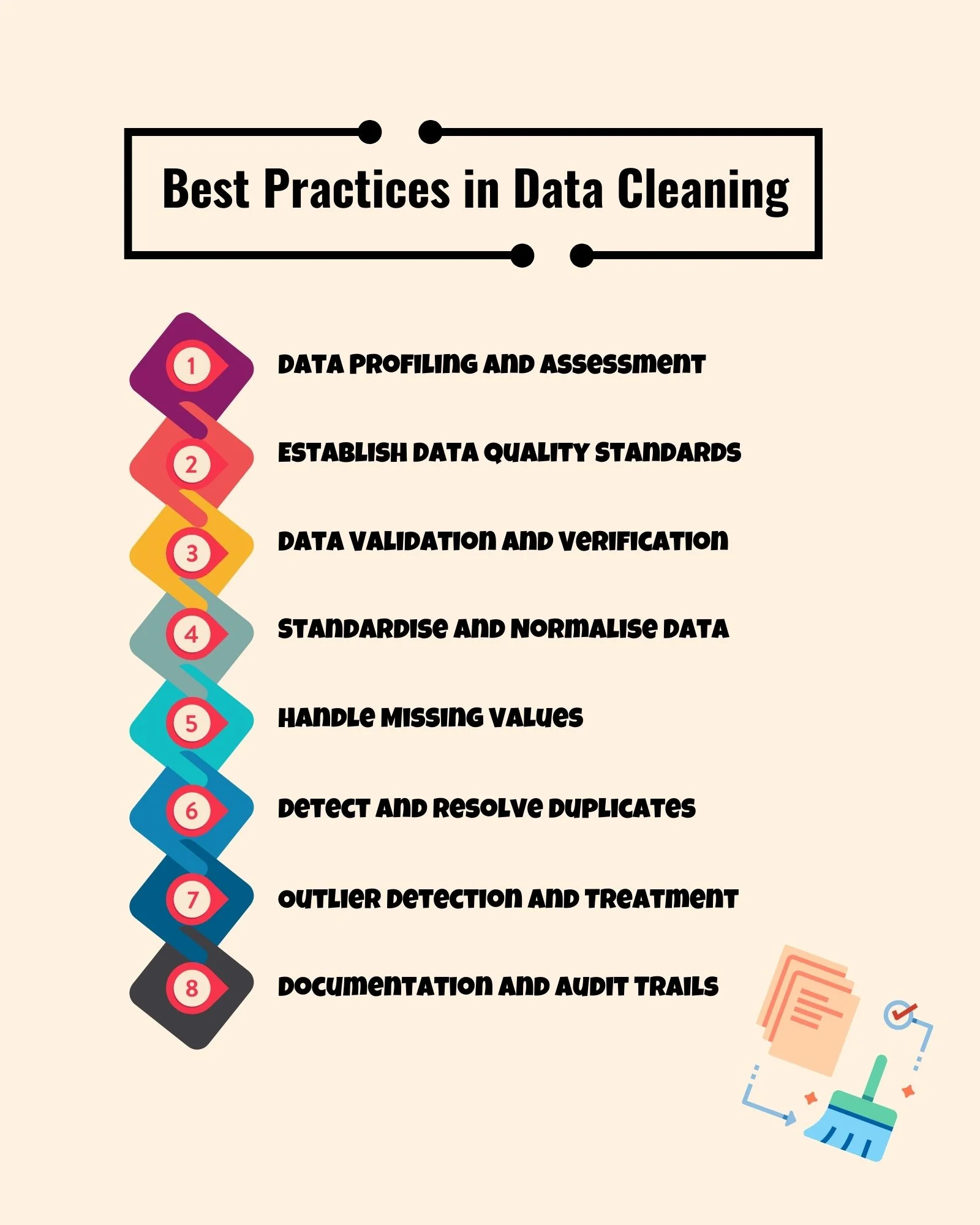
1. Data Profiling and Assessment
Data profiling and assessment serve as the initial steps in any data-cleaning endeavour. They involve a comprehensive examination of the data to fully understand its quality, structure, and potential issues. This practice goes beyond surface-level inspection and delves into the intricacies of the data. By identifying patterns, outliers, and data distribution, organisations gain a nuanced view of their data, enabling them to tailor their cleaning efforts effectively. Furthermore, data profiling is an ongoing practice, as data evolves over time. Regular assessments ensure that data remains clean and reliable even as new information is added.
2. Establish Data Quality Standards
Establishing clear data quality standards is akin to setting the rules of engagement for data within an organisation. These standards encompass various aspects, including data accuracy, completeness, consistency, and relevancy. Each organisation may have specific requirements based on its unique industry and objectives. By defining these standards explicitly, organisations create a benchmark against which they can measure the quality of their data. It also provides a basis for data validation rules and automated checks, ensuring that data consistently adheres to the defined standards.
3. Data Validation and Verification
Data validation and verification represent the vigilant gatekeepers of data quality. These practices involve applying validation rules, business logic, and cross-referencing data against trusted sources. Data validation ensures that data conforms to predefined standards and that it aligns with the organisation's data quality goals. Verification processes act as a second layer of scrutiny, double-checking the data for accuracy and completeness. This two-pronged approach minimises the chances of data errors slipping through the cracks and infiltrating critical systems and decision-making processes.
4. Standardise and Normalise Data
Data comes in various formats, units of measurement, and naming conventions. Standardising and normalising data is the process of homogenising these elements to ensure consistency. It extends beyond merely reformatting data; it involves aligning data with common standards that facilitate seamless integration and analysis. Standardisation practices encompass addressing inconsistencies in date formats, unifying units of measurement, and streamlining naming conventions. These efforts create a unified data environment where data from disparate sources can coexist harmoniously and readily be used.
Best Practice | Description |
Data Profiling | Understand data quality through assessment. |
Data Quality Standards | Define clear standards for data consistency. |
Validation and Verification | Ensure data conforms to predefined standards. |
Standardisation | Consistently format data for uniformity. |
Handle Missing Values | Address missing data through strategic approaches. |
Deduplication | Identify and manage duplicate records effectively. |
Outlier Detection | Detects and manages outliers for data accuracy. |
Table 1: Best practices in data cleaning
5. Handle Missing Values
Missing data is a pervasive issue that can undermine the integrity of analyses and decision-making. Effective strategies for handling missing values are vital in data cleaning. Options for addressing this challenge include imputing missing values using statistical methods, deleting rows with missing values, or even considering using advanced machine learning algorithms for imputation. The choice of strategy depends on the nature of the data and the potential impact of missing values on the analysis. A thoughtful approach to missing data ensures that data cleaning does not compromise data integrity.
6. Detect and Resolve Duplicates
Duplicate records can distort analysis and lead to incorrect conclusions. Detecting and resolving duplicates is a meticulous process that involves implementing techniques such as fuzzy matching algorithms, unique identifiers, or manual review. Furthermore, duplicate management should not be a one-time effort but an ongoing practice as new data is added. By maintaining a vigilant stance against duplicates, organisations can prevent data bloat and maintain data quality over time.
7. Outlier Detection and Treatment
Outliers, whether valid or erroneous, can significantly impact analyses and decision-making. Detecting and treating outliers involves identifying extreme values and determining their validity based on domain knowledge or statistical techniques. Valid outliers can provide valuable insights, while erroneous ones can skew results. A careful balance must be struck between preserving data integrity and extracting meaningful insights from outliers. Effective outlier management ensures that data remains a faithful reflection of reality.
8. Documentation and Audit Trails
Documentation and audit trails are the transparency and accountability backbone of data cleaning efforts. Maintaining detailed documentation of the data cleaning process, including the steps taken, decisions made, and transformations applied, is essential for several reasons. It provides a historical record of data quality management, aids in reproducibility, and supports compliance efforts. Moreover, it fosters collaboration among data stewards, analysts, and data scientists, ensuring everyone is on the same page regarding data quality practices.
Challenges in Data Cleaning at Scale
While data cleaning is essential for data quality, it can become daunting when dealing with vast amounts of data. In this section, we'll explore some of the challenges organisations face when cleaning data at scale and strategies to address them:
Scalability
Cleaning large datasets can be time-consuming and resource-intensive. Organisations must invest in scalable data-cleaning solutions that can efficiently handle big data.
Data Integration
Integrating and cleaning data from various sources cohesively can be challenging. Adopting data integration platforms that allow for seamless data cleansing during the integration process can help mitigate this challenge.
Data Privacy
Ensuring data privacy and compliance with regulations like GDPR and HIPAA becomes increasingly complex when cleaning large datasets. Organisations must implement robust data anonymisation and protection measures to maintain data privacy during cleaning.
Implementing a Data Cleansing Strategy Plan
To successfully implement a data cleansing strategy, follow these steps:
1. Define Objectives
Defining objectives is the foundational step in creating a data-cleansing strategy plan. These objectives should align with the broader organisational goals and data quality requirements. To further enhance this step, organisations can consider the following:
- SMART Objectives: Ensure that objectives are Specific, Measurable, Achievable, Relevant, and Time-bound. This clarity makes it easier to gauge the success of data cleansing efforts.
- Prioritisation: Prioritise objectives based on their impact on business outcomes. Some data elements may be more critical than others, necessitating different levels of cleansing effort.
2. Allocate Resources
Allocating resources involves assigning dedicated personnel, tools, and technologies to efficiently execute the data cleansing tasks. To expand on this practice:
- Skilled Personnel: Identify individuals with the requisite data expertise and domain knowledge to lead data cleansing efforts effectively.
- Data Cleansing Tools: Evaluate and select appropriate data cleansing tools and technologies, considering factors such as scalability and compatibility with existing systems.
3. Prioritise Data Elements
Determining which data elements are critical for analysis and decision-making is essential. To provide further depth to this practice:
- Data Impact Assessment: Assess each data element's impact on key performance indicators (KPIs) and organisational objectives. Focus data cleansing efforts on elements that have the most significant influence.
- Data Dependency Analysis: Consider the interdependencies between data elements. Ensure that cleansing one element does not inadvertently impact the accuracy or usefulness of others.
4. Establish Data Governance
Developing a robust data governance framework is pivotal for successful data cleansing. To elaborate on this practice:
- Roles and Responsibilities: Clearly define roles and responsibilities for data stewards, data owners, and other stakeholders involved in data quality management.
- Data Quality Standards: Formalise data quality standards within the governance framework, outlining specific data accuracy, completeness, and consistency requirements.
5. Iterative Approach
Breaking down the data cleansing process into manageable tasks and stages is crucial. To provide more context:
- Agile Methodologies: Adopt agile methodologies for data cleansing, which will allow flexibility and adaptability as data quality issues are discovered and addressed.
- Continuous Improvement: Embrace a culture of continuous improvement in data quality management. Regularly review and enhance data cleansing processes to keep up with changing data dynamics.
6. Test and Validate
Rigorous testing and validation ensure the effectiveness of the cleansing techniques. To delve further into this practice:
- Data Sampling: Use representative sample datasets to validate cleansing techniques before applying them to the entire dataset. This minimises the risk of unintended consequences on a larger scale.
- Cross-functional collaboration: Encourage collaboration between data professionals, analysts, and domain experts during the testing and validation phase to validate data quality from various perspectives.
7. Monitor and Maintain
Monitoring data quality is essential to identify emerging issues and implement preventive measures. To expand on this practice:
- Key Metrics: Establish key performance indicators (KPIs) related to data quality and regularly monitor them. Set up alerts or triggers for when data quality falls below predefined thresholds.
- Automated Data Quality Checks: Implement automated data quality checks and reporting mechanisms to streamline monitoring processes and ensure timely intervention.
In summary, implementing a data cleansing strategy plan is a multidimensional effort that extends beyond defining objectives and allocating resources. It involves a comprehensive approach to data governance, continuous improvement, and proactive monitoring. By further elaborating on these steps and incorporating them into a well-structured plan, organisations can navigate the data cleansing journey more precisely, ensuring that data remains a reliable asset for decision-making and strategic initiatives.
Data Cleaning Tools and Technologies
The landscape of data cleaning tools and technologies is continually evolving. Organisations can benefit greatly from utilising specialised software and platforms designed to streamline and automate the data-cleaning process. Let's explore some of the popular data-cleaning tools and technologies available today:
Data Cleaning Software
Several data-cleaning software solutions are on the market, each offering unique features and capabilities. These tools often provide automated data profiling, cleansing, and validation functions, making it easier for organisations to clean their data efficiently. Some notable options include Alteryx, Talend, and OpenRefine.
Machine Learning for Data Cleaning
Machine learning algorithms can detect and correct data errors automatically. These algorithms can identify patterns and anomalies in the data, making them particularly useful for handling large datasets. Organisations can leverage libraries and frameworks like Python's sci-kit or dedicated machine learning platforms designed for data cleaning tasks.
Data Quality Dashboards
Data quality dashboards provide real-time visibility into an organisation's data quality. These dashboards often offer interactive visualisations and key metrics that help data stewards, and analysts monitor data quality and take corrective actions promptly.
The Future of Data Cleaning: AI and Automation
As technology advances, the future of data cleaning holds exciting possibilities. Artificial intelligence (AI) and automation are poised to revolutionise how organisations clean and maintain their data. In this section, we'll explore how AI and automation are shaping the future of data cleaning:
AI-Powered Data Cleaning
AI algorithms can learn from historical data-cleaning processes and make intelligent decisions about data cleansing. They can identify and fix errors, anomalies, and inconsistencies more accurately and rapidly than manual methods.
Automated Data Governance
AI-driven data governance solutions can automatically enforce data quality standards, track changes, and provide real-time alerts when data quality issues arise. This ensures ongoing data cleanliness without constant manual intervention.
Predictive Data Cleaning
AI can predict potential data quality issues before they occur. By analysing historical data patterns, AI models can anticipate errors, enabling organisations to prevent data quality degradation proactively.
Integration with Data Lakes
As organisations increasingly rely on data lakes for storing and managing vast amounts of data, AI and automation will play a crucial role in maintaining data quality within these environments. AI-powered data lake management solutions can automate data cleansing and quality checks.
Incorporating these advancements in AI and automation into data cleaning strategies will undoubtedly lead to more efficient, accurate, and proactive data quality management.
Aspect | Data Cleaning Then | Data Cleaning Now |
Approach | Manual, time-intensive | Automated, efficient processes |
Tools | Limited, basic software | Advanced AI-driven solutions |
Data Sources | Local, structured data | Global, diverse data sources |
Data Volume | Small datasets | Biigg data, massive volumes |
Complexity | Simple, single-source | Complex, multi-source data |
Speed | Slower, periodic cleansing | Real-time, continuous monitoring |
Accuracy | Prone to errors | Improved accuracy and reliability |
Table 2: Data cleaning then vs. now
Conclusion
Data cleaning is a critical step in harnessing the true value of data. Organisations can implement effective data cleansing strategies by understanding what data cleaning entails, its root causes, and its benefits. Following best practices, such as data profiling, standardisation, validation, and documentation, ensures that data is accurate, consistent, and reliable. Organisations can make informed decisions, drive operational efficiency, and deliver enhanced customer experiences with a well-implemented data cleansing strategy.
By adopting these best practices and committing to ongoing data cleanliness, organisations can unlock the power of accurate data and gain a competitive advantage in today's data-centric landscape.






